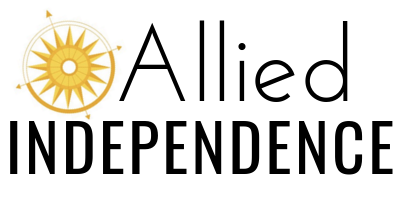140. Using AI at Street Crossings with Michiel Janssen, Founder of OKO
Topics:
technology, AI, artificial intelligence, street crossing, orientation and mobility, independence, visually impaired, visual impairments, pedestrian, safety, intersection, signal, OKO, accessibility, specialists, community, walk
Exploring the world designed primarily for those with sight can be quite challenging for those who are visually impaired. It comes with its unique set of difficulties. However, it's also a journey that showcases the incredible human ability to adapt, come up with new solutions, and keep going despite the odds. Exploring what it's like to get around the world when you're visually impaired means taking a trip through a world where your other senses become more important, where you might rely on maps with raised dots, and where advanced technology has made it easier to move around independently.
In a world where technology continues to break barriers and transform various aspects of our lives, one remarkable innovation is transforming the way visually impaired individuals navigate the urban landscape using artificial intelligence (AI). One area where AI is making a remarkable impact is in the realm of accessibility, specifically at street crossings for visually impaired individuals. Meet OKO, a pioneering company at the forefront of using artificial intelligence (AI) to revolutionize street crossings and enhance safety and independence for people with visual impairments.
Navigating busy streets, crossing intersections, and safely traversing pedestrian crossings can be daunting tasks for visually impaired individuals. Traditional traffic systems often fall short in providing them with the information and confidence needed to navigate these environments independently. OKO recognized this challenge and set out to create a solution that would empower visually impaired individuals and make streets safer for everyone.
Founded by the visionary Michiel Janssen, OKO's mission is to harness the power of AI to bridge the accessibility gap in urban environments. Their innovative approach combines cutting-edge technology, computer vision, and machine learning to develop a system that provides real-time information to those who need it most.
The Role of OKO:
OKO's AI system, integrated into street crossings, is designed to detect and recognize pedestrians, cyclists, and vehicles in the vicinity. This has the potential to revolutionize street crossings in several ways:
Real-time Data Information - OKO provides real-time auditory feedback to visually impaired individuals, informing them when it's safe to cross, the direction of oncoming traffic, and the movement of different types of objects in the area.
Enhanced Safety - By offering instant information and guidance, OKO contributes to a safer crossing experience, reducing the risk of accidents and enhancing personal safety.
Independence - OKO empowers visually impaired individuals to cross streets independently, reducing their reliance on assistance from others.
Reduced Stress and Anxiety - Knowing that OKO is in place to assist them, visually impaired individuals can navigate streets with reduced stress and anxiety.
How to use OKO:
Launch the OKO App. - Say 'Hey Siri, open OKO' for hands-free access or tap the app icon manually.
Position your phone correctly. - Place your phone against your chest, camera facing your desired direction. Consider a lanyard case for added convenience.
Elevate your sense of direction. - Start by pointing away from the intersection and gradually move toward the parallel street while keeping the camera aimed in your intended crossing direction. Once the app identifies the pedestrian traffic signal, it will confirm you're facing the right direction for crossing.
Follow OKO to stay on course. - Keep your phone against your chest while crossing. If OKO loses the pedestrian signal, adjust your direction to stay on course.
The impact of AI at street crossings for visually impaired people is profound. The fusion of AI technology with the indomitable spirit of visually impaired individuals signifies a remarkable step towards a world where barriers are replaced with opportunities, and where inclusivity becomes the cornerstone of progress. AI-driven innovations like OKO have not only opened new pathways for visually impaired individuals but have also enriched our collective understanding of accessibility and empathy. In this transformative era, society must actively foster an environment of inclusivity, one where the potential of every individual is celebrated and realized.
OKO's dedication to using AI for the benefit of visually impaired individuals is a testament to the transformative power of technology. It is also a shining example of technology's capacity to drive positive change and enhance the quality of life for marginalized communities. AI, in this context, is not just about advanced technology; it's about fostering a more inclusive and accessible world. As we move forward, it's essential to support and celebrate innovations like OKO that make our cities safer and more accessible for everyone, regardless of their abilities.
As we navigate the uncharted territories of a future where AI and human resilience intersect, we must keep in mind that the journey is not just about reaching a destination; it's about forging a path that invites everyone to walk alongside, regardless of their visual acuity. In doing so, we don't just empower visually impaired individuals to navigate the world; we illuminate a brighter, more inclusive path for all of humanity.
